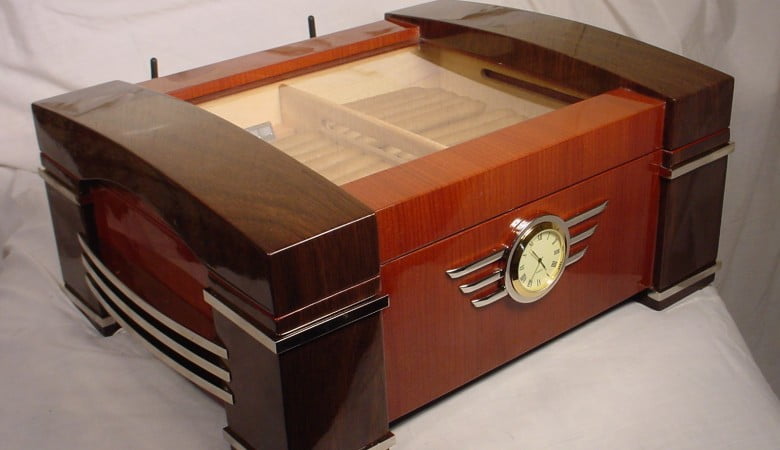The Quantum Dynamics Unit traps a 2D layer of electrons in liquid helium, holds the interior in a sealed chamber, and cools to almost absolute 0. Inside the chamber, a steel plate and a spherical mirror at the pinnacle mirror microwave mild (the crimson beam), resulting from a microwave hollow space (resonator). The trapped microwaves interact with the electrons floating on the liquid helium.

Credit: OIST CC 2.0
Tiny transferring debris make up the whole thing in our physical global — together with present-day electronics, whose function relies on the motion of negatively charged electrons. Physicists try to apprehend the forces that push those particles into a movement to harness their electricity in new technologies. Quantum computer systems, as an instance, employ a fleet of precisely managed electrons to take on Goliath computational tasks. Recently, researchers at the Okinawa Institute of Science and Technology Graduate University (OIST) established how a shape of mild, known as microwaves, cuts in on the movement of electrons. The findings may also help enhance quantum computing.
Normal computer systems run on zeros and ones, and this binary code limits the volume and form of statistics the machines can manner. Subatomic debris can exist in greater than two discrete states, so quantum computer systems harness electrons to crunch complex information and carry out features at whiplash speed. Scientists capture the particles and expose them to forces that modify their behavior to preserve electrons in limbo.
In the brand new look posted December 18, 2018, in Physical Review B, OIST researchers trapped electrons in a frigid, vacuum-sealed chamber and subjected them to microwaves. The particles and light altered each different’s motion and exchanged strength, which shows the sealed device should doubtlessly be used to keep quantum information — a microchip of the future.
““This is a small step toward a venture that calls for plenty greater research,” said Jiabao Chen, first creator of the paper and a graduate scholar inside the OIST Quantum Dynamics Unit, led via Prof. Denis Konstantinov. .” ..Creating novel states of electrons for the cause of quantum computing and storing quantum facts.”
Sending Electrons Spinning
Light, composed of speedy, oscillating electric powered and magnetic fields, can push round charged to remember it meets inside the environment. If mild vibrates at the same frequency as electrons it encounters, the mild and debris can trade electricity and facts. When that happens, the movement of the mild and electrons is “coupled.” If the strength change occurs quicker than other mild-matter interactions in the surroundings, the movement is “strongly coupled.” Here, the scientists set out to gain a strongly coupled nation the usage of microwaves.
“Achieving strong coupling is a vital step toward quantum mechanical manage over particles the use of light,” said Chen. ““This may be essential if we need to generate a few non-classical countries of being counted.”
To study robust coupling, in reality, it helps to isolate electrons from deceptive “sign noise” in their surroundings, which arises whilst electrons collide with close by count number or interact with heat. Scientists have studied the impact of microwaves on electrons in semiconductor interfaces — where a semiconductor meets an insulator, accordingly confining the movement of electrons to 1 aircraft. But semiconductors include impurities that hinder the natural movement of electrons.
No cloth is absolutely devoid of defects, so the Quantum Dynamics Unit opts for an exchange solution — setting apart their electrons in frigid vacuum-sealed chambers fitted with metallic mirrors that mirror microwaves.
The chambers, small cylindrical bins called cells, each incorporates a pool of liquid helium, kept at a temperature near absolute zero. Helium remains liquid at this hot temperature, but any impurities floating in the substance freeze and cling to the cellular edges. Electrons bind to the helium’s surface, effectively forming a two-dimensional sheet. Researchers can then disclose the ready electrons to electromagnetic radiation, including microwaves, by using capturing the mild between the two mirrors in the cellular.
This exceedingly easy system discovered they affect microwaves on the rotation of electrons — an effect that has been invisible in semiconductors.
“In our set-up, we can decide the path of bodily phenomenon greater honestly,” said Dr. Oleksiy Zadorozhko, an creator at the paper and postdoctoral pupil within the Quantum Dynamics Unit. “We determined that microwaves had vast have an effect on at the motion on electrons.”
Powering Up Quantum Computing
The physicists described their findings mathematically and discovered that fluctuations inside the speed, area, or standard charge of character electrons had a little effect over the sturdy coupling effects. Instead, the average motion of particles and microwaves, en masse, seemed to trigger a trade of strength and information between them. The researchers hope that, within the destiny, the liquid helium system will furnish them precise control over electrons, thereby letting them read, write, and procedure quantum information, much like how we keep preferred information on hard power. With more suitable information of this device, the Quantum Dynamics Unit targets to improve upon the industry general for qubits — bits of quantum information. Their efforts may additionally result in the development of faster, extra powerful quantum technology.









